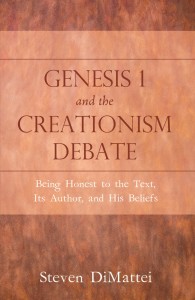My current research and writing projects display an interest in the textual history of the Bible. In other words, how did the various and once independent texts and traditions that now make up what later generations of readers dubbed “the Bible” come about? And more significantly, how do these once independent texts now interact with each other in their new composite framework? Thus the title of the other project that I am working on: The Bible’s Many Authors and the Contradictions They Left Behind. I’d like to post parts of the introduction to this project and then continue by actually posting various textual contradictions and explaining how they came about and what they tell us about the Bible’s composite nature. I hope to generate some sort of feedback and discussion as we move along. We will limit our inquiry to the Torah.
There are literally thousands of contradictions in the Bible, from minute differences in narrative details to sweeping theological and ideological disagreements, beliefs, and worldviews. This has been an established and well-known fact in the scholarly community for over a century! The Bible’s Many Authors and the Contradictions They Left Behind brings this scholarship to the public in a lively, detailed, and accessible manner. Enumerated on its pages is a complete list of the almost 500 contradictions that are present in the Torah alone—all of which were left by the Torah’s many authors when the individual and once separate texts that these authors produced were edited together by a later generation of readers who sought to preserve these earlier textual traditions for the purpose of meeting the needs and concerns of its own historical era. All of the Torah’s contradictions can be understood and explained by acknowledging the very fact that the Torah, as it has come down to us, is a composite text. In other words, it was created by combining numerous texts and traditions together in a complex and elaborate process of writing, rewriting, revision, and editing that occurred over centuries and culminated in the creation of the Torah in the 4th century BC.
But this discovery—that the Torah is actually composed of many different texts, penned by different authors, all of whom wrote hundreds of centuries after Moses and who often disagreed with one another—did not happen over night. Nor did it happen without strong and often hostile opposition by mainstream traditionalists and conservative theologians, many of whom later endorsed such views. Nor, it might be added, did it happen because scholars sought for this to happen. Rather, it happened gradually over a period of roughly one-thousand years! Astute readers of the Torah started to notice an increasing number of textual anomalies, doublets, contradictions, and competing languages, styles, and even messages in the text—all of which presented textual data that clashed with the traditional and theological claim of Mosaic authorship, or any single authorship for that matter, divine or human. Rather, the discovery that the Torah, and in general the Bible as a whole, was a text composed out of earlier texts and traditions was a claim that was being made by the independent voices of the biblical texts themselves. That upon careful examination of the biblical text(s), it was the Bible itself—its textual data—that was asserting this claim, demonstrating and revealing it on countless occasions to its diligent and careful readers, much like the laws of Nature are discovered through the studious observation of Nature’s phenomena. The Bible is no different; it’s compositional nature is revealed through studiously observing the text and its anomalies, or as one scholar put it, its seams and its fractures.
This one-thousand year period of slow and continuous biblical scholarship and discovery may even be envisioned within a larger progression of human understanding about the nature of the biblical texts. The formation of the Bible out of a collection of diverse texts and traditions was the culmination of a process of textual transmission, editing, and finally canonization that extended over roughly one-thousand years, from the 9th century BC to the 2nd century AD. We might then say that knowledge of the origins, historical circumstances, and composite nature of the Bible laid dormant for another one-thousand year period, from the 2nd to 11th centuries, wherein it was perceived through an interpretive theological lens as a canonical “Holy Book” immune to critical analysis. And lastly, through the last one-thousand year period, from the 11th to the 21st centuries, educated readers and scholars alike have slowly unraveled the mysteries of the Bible’s origins and sources, moving us back once again to a period in time before the biblical texts came to be canonized under the prescriptive title “the Bible.” Not surprisingly, most of this progress has come in the last three centuries, where scholars have continuously and unanimously affirmed the Bible’s composite nature—an inevitable conclusion drawn and consistently redrawn from the observation of the Bible’s textual data. These textual data—the subject of forthcoming posts—tell us that “the Bible” is in fact no book at all, but a vast collection of different texts, penned by various authors, under divergent religious and political circumstances and convictions—all of which were later redacted together, authenticated as scripture, and canonized as a single Book [see my What is the Bible series, Part 1, 2, and 3]. The textual data in support of this claim are the numerous contradictions, variations, duplicates, anachronisms, and stylistic, lexigraphical, and theological differences found throughout the Bible’s sixty-six different scrolls and codices, many of which, as we will explore, are incompatible with one another on theological or ideological grounds. It’s time we took a closer look at just how the Bible was discovered to be a collection of diverse, and often contradictory, texts and traditions.





